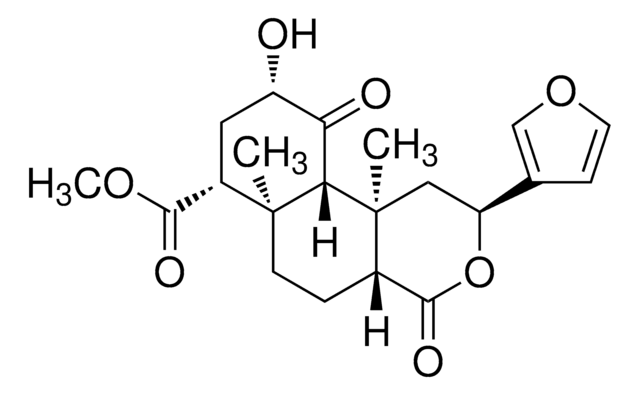489479
LSD1 Inhibitor IV, RN-1, 2HCl
LSD1 Inhibitor IV, RN-1, HCl, is a cell-permeable potent, irreversible inhibitor of lysine specific demethylase 1 (LSD1; IC₅₀ = 70 nM in a HRP-coupled assay using H3K4Me2 peptide substrate).
Synonym(s):
LSD1 Inhibitor IV, RN-1, 2HCl, LSD Inhibitor IV, Histone Lysine Demethylase Inhibitor VI, MOA Inhibitor III, 2-(1R,2S)-2-(4-(Benzyloxy)phenyl)cyclopropylamino)-1-(4-methylpiperazin-1-yl)ethanone, HCl, BHC110 Inhibitor IV, KDM1 Inhibitor IV, LSD Inhibitor IV, KDM1 Inhibitor IV, Histone Lysine Demethylase Inhibitor VI, MOA Inhibitor III, 2-(1R,2S)-2-(4-(Benzyloxy)phenyl)cyclopropylamino)-1-(4-methylpiperazin-1-yl)ethanone, HCl, BHC110 Inhibitor IV
About This Item
Recommended Products
Quality Level
Assay
≥97% (HPLC)
form
solid
manufacturer/tradename
Calbiochem®
storage condition
OK to freeze
desiccated (hygroscopic)
protect from light
color
yellow
solubility
DMSO: 2.5 mg/mL
water: 2.5 mg/mL
shipped in
wet ice
storage temp.
−20°C
General description
Packaging
Warning
Reconstitution
Other Notes
Legal Information
Storage Class Code
11 - Combustible Solids
WGK
WGK 2
Flash Point(F)
Not applicable
Flash Point(C)
Not applicable
Certificates of Analysis (COA)
Search for Certificates of Analysis (COA) by entering the products Lot/Batch Number. Lot and Batch Numbers can be found on a product’s label following the words ‘Lot’ or ‘Batch’.
Already Own This Product?
Find documentation for the products that you have recently purchased in the Document Library.
Our team of scientists has experience in all areas of research including Life Science, Material Science, Chemical Synthesis, Chromatography, Analytical and many others.
Contact Technical Service








